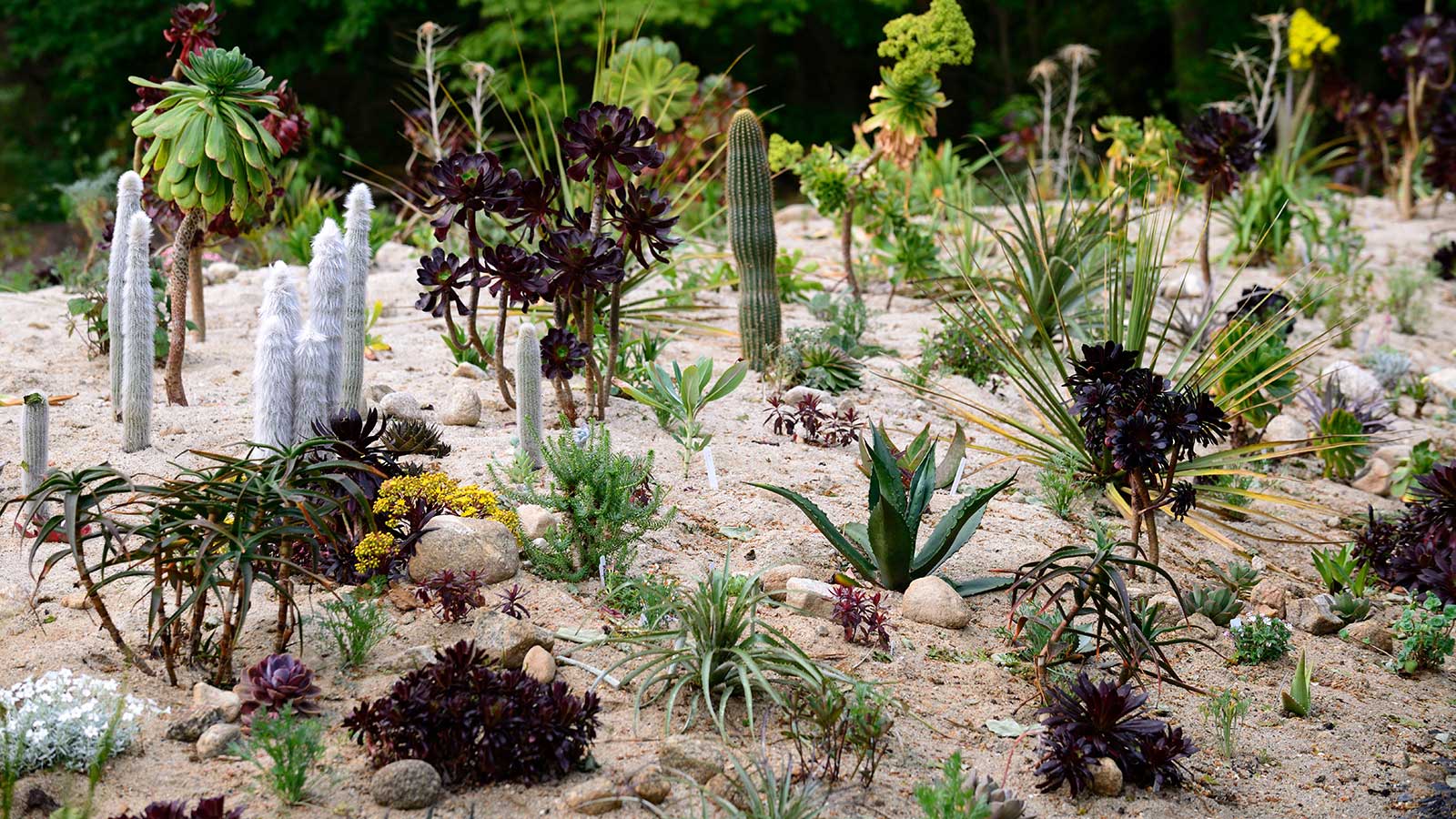How to grow plants in sand instead of soil – experts share tips for this alternative gardening method
With the right know-how, plants growing in sand can thrive with minimal maintenance


Using sand instead of soil in the garden may sound a little strange. However, it can offer a range of benefits for both you and your plants. When executed well, this interesting approach can lead to a thriving and more eco-friendly garden. Its success has been notably demonstrated by gardener Peter Korn and his partner Julia Andersson at Klinta Trädgård in Sweden, which includes a nursery where everything is grown in sand.
Petar Ivanov, a gardening expert from Fantastic Gardeners, is an advocate for the idea. He highlights how growing in sand enhances the robustness of plants, as well as minimizing the need for extensive maintenance. This is ideal if you're short on time for watering and other outdoor tasks, and a big plus point in the face of changing climate patterns.
Not only this, but using sand as a planting medium can result in enhanced drainage, says Juan Palacio, the CEO of BloomsyBox. This reduces the risk of root rot and other moisture-related diseases. Sand also heats up quicker than soil in the spring, he adds, which can extend the growing season for some plants.

Sand can be a useful gardening resource
How to use sand in your garden
Gardening in raised beds filled with sand can be an effective way to experiment with this idea. According to the Fantastic Gardeners team, the roots of your plants should be washed to remove any soil before being planted in sand. They should then be watered in well.
For a slightly less radical approach, consider Juan's recommendation of mixing sand with organic matter, such as compost. This will improve its water retention and nutrient content, which is naturally low. 'A ratio of about 30% sand to 70% organic matter can offer a balanced medium for your plants,' he says.
David Whitwam, the owner of Whitwam Organics, follows this latter approach when growing fruits or veggies. 'In fact, the raised bed garden soil that we make and sell is about 30 to 40% sand,' he says.
'Additionally, mulching the surface with organic material can help retain moisture and add nutrients over time,' Juan adds.
Design expertise in your inbox – from inspiring decorating ideas and beautiful celebrity homes to practical gardening advice and shopping round-ups.

Juan Palacio is the proud founder of BloomsyBox, a Miami-based floral subscription company. BloomsyBox has made it onto the prestigious Inc. 5000 list of the fastest-growing companies in the US for two consecutive years. To ensure the sustainability of his business, Juan has returned to his roots in South America to cultivate relationships with sustainable flower farms.

Petar Ivanov is a gardening and plant expert who has been working at Fantastic Gardeners for eight years. As one of the company's top-performing experts, he now manages over six teams of gardeners, delivering stunning landscape results and fostering a deep connection with nature through his work.
Types of plants to grow in sand

Opt for plants that naturally grow in drier conditions
It's wise to choose suitable plant varieties when using sand in your garden. Try drought-tolerant plants hailing from hot climes. Think varieties of ornamental grasses, annual flowers such as poppies, and others that can handle less fertile soils. David notes that their soil down in Florida is mostly sand, and a lot of native plants actually prefer it.
Juan says, 'Succulents, cacti, and certain herbs like lavender and rosemary are excellent choices. These plants have evolved to excel in conditions where water is scarce and drainage is high, making them perfect for sandy substrates.'
A variety of lavender plants are available to buy from Burpee. The 'Firecracker' sedum from Burpee is a great option, too, with its beautiful pink blooms and red foliage.
If you like the idea of tending to a vegetable garden, some crops are worth considering for this approach. According to Juan, carrots, radishes, and potatoes can perform well in sandy conditions due to the loose structure, allowing for easier root expansion.
FAQs
What is the best type of sand to use for gardening?
'The best type of sand for gardening purposes is coarse sand,' says Juan Palacio, the CEO of BloomsyBox. 'This variety ensures better drainage and aeration compared to finer sands, which are more prone to compaction, thus hindering root growth and water movement.'
Can you grow houseplants in sand?
If you're interested in growing houseplants without soil, you could consider opting for sand. It's a good choice for indoor succulents and other varieties that thrive with less moisture. However, note that you will need to add fertilizer when watering, to provide essential nutrients.
Raising plants in sand is well-suited for drought-tolerant gardening. If you're looking for more inspiration, you might like our tips on xeriscaping, too.

Holly started writing about gardening five years ago, and she is a regular contributor to Homes & Gardens. She has also written many gardening features for Woman & Home and Real Homes, too. She has previous experience as a professional gardener, where she helped to plant and maintain private gardens. Holly has also looked after allotment plots over the years and loves to grow her own flowers and veggies from seed. In her spare time, she enjoys visiting local gardens, botanical drawing, and tending to her ever-growing collection of houseplants.